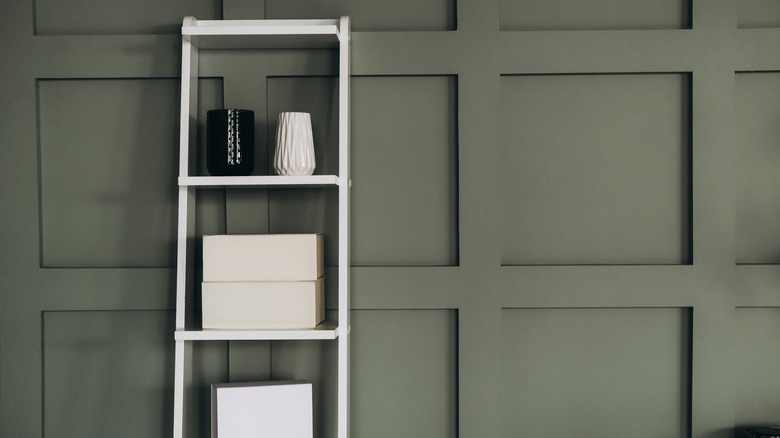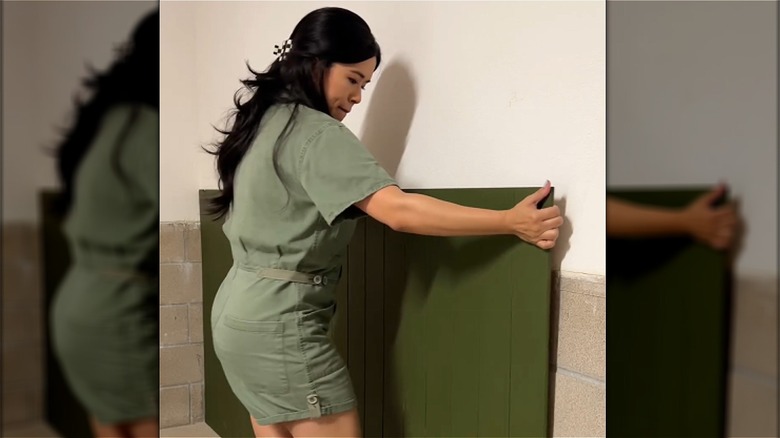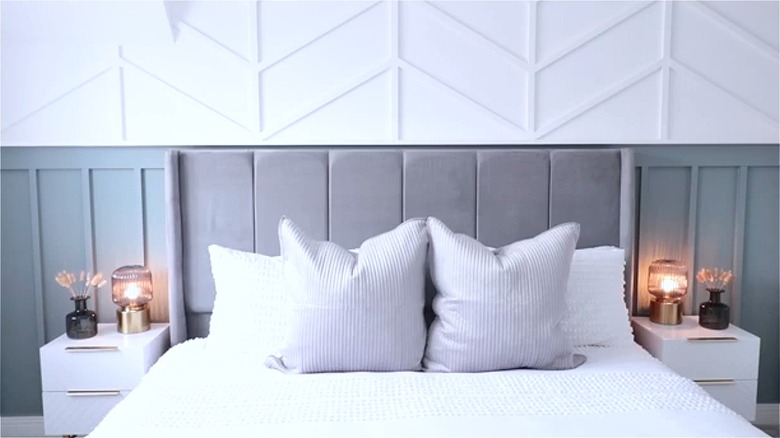The Renter-Friendly Wall Paneling Hack That Looks Like The Real Deal
One of the best ways for renters to fix up their apartments also packs the biggest punch. You may want to transform your space to reflect your style, but many landlords have strict rules about what you can (and can't) do to the walls. So, if you're looking for a change and a way around the rules, we may have a solution that offers a sense of character for your space: renter-friendly wall paneling. More specifically, faux wood paneling has become a go-to for renters looking for an affordable and temporary solution to elevate their homes without worrying about causing permanent damage. The beauty of this hack is that it mimics the warm, rich look of real wood, and it's easy to install and even easier to remove.
Whether you're looking for a cozy, rustic feel or a sleek, modern design, faux wood paneling provides endless flexibility. And the best part? You don't need to hire professionals or break out the power tools. There's an option for every kind of DIYer, from peel-and-stick panels to lightweight slats that adhere with removable strips. For a dramatic transformation without sacrificing your deposit, put down the drill and scroll on.
Installing faux wood paneling without damaging walls
When paint or nails are not an option for your rental, installing removable wall treatments may be the only way to mark your territory. Wood paneling is coming back in style, and our faux option is a fun DIY project that will elevate your living space. As we pointed out previously, you can preserve the integrity of your walls by choosing peel-and-stick tiles, lightweight slats, and interlocking wood-look panels. Peel-and-stick options are particularly popular for renters as they can be applied directly to the wall and easily removed without leaving a trace. Elsewhere, Tina Le Mac posted an Instagram reel where she upscaled her space using authentic-looking interlocking panels that were easy to install.
Before you start, ensure your walls are clean and smooth by wiping them down with a mild detergent to remove dust and grease. It's also smart to measure and mark the areas where you plan to attach the panels to ensure a neat finish. Now comes the actual installation. If you're using peel-and-stick products, simply remove the backing from each board and press them onto the wall, aligning them with your markings. For slats or interlocking products, use removable adhesive strips to secure them so that you can detach them when your lease is up without damaging the wall beneath. Once your panels are installed, place trim around the edges for a polished look that covers any imperfections at the seams as a bonus.
The pros and cons
Faux wood paneling is a stylish solution for renters, but like any home improvement project, there are pros and cons to consider. Both peel-and-stick and interlocking wood products are great ways to decorate your home on a budget, and they're also easy projects. Another advantage is that temporary treatments such as these allow you a great deal of flexibility, so you can experiment with the look as you try to figure out your style without damaging your walls. Fake wooden trims can really elevate your space and create a cozy atmosphere, and when it's time to move, you can reclaim your security deposit.
Now for the downsides. For one, these kinds of treatments may not stand up to the same wear and tear as real wood. Be mindful of potential issues like scratches or peeling, especially in high-traffic areas. Part of the issue is that the adhesive used in peel-and-stick decals — and even in the interlocking panels — may weaken over time, leading to lifted or curled edges, particularly in humid environments. To minimize this and prevent it from becoming a problem, regularly check the panels for any signs of detachment. Nevertheless, with the right approach and maintenance, you can enjoy the warmth and character of wood at a fraction of the cost of the real deal. Who needs long-term commitments anyway?


